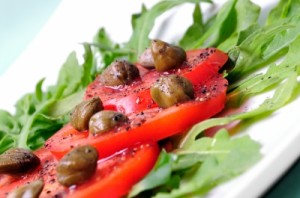 There are five supplements I think every adult should take. The first one is a whole-food based multivitamin.
There are five supplements I think every adult should take. The first one is a whole-food based multivitamin.
A recent article in Reader’s Digest called vitamins a scam and said that taking them is a waste of money. It cited a study of 160,000 mid-life women that showed no difference in health with respect to the big diseases like cancer, heart disease and stroke, from taking a multivitamin. But as with all studies, you need to dig deeper—in this case because not all vitamins are created equal. (I am always suspect when a magazine whose advertising is largely from pharmaceutical companies says vitamins are worthless.)
The article challenges the benefits of certain individual supplements, such as vitamins A or E, which will likely have little, if any, effect when taken in isolation without proper co-factors. The article does recommend one standalone vitamin that should be taken by everyone: vitamin D. I’ve discussed the importance of vitamin D in another chapter and the rampant deficiency among children and adults today, so I couldn’t agree more. Vitamin D3 can stand on its own and I take it daily; most other vitamins need to be taken together as part of a complete nutritional package.
Eating a whole food and plant-based diet will go a long way toward staying healthy and I strongly recommend we do both. We cannot eat too many dark leafy green vegetables and we should be eating the rainbow (fruits and vegetables that cover every spectrum of color from white to orange, red, green and purple.) But I also take a whole food multivitamin and a whole food raw green superfood powder, because the truth is, it is very difficult to get the nutrients we need from our modern food supply.
These days, to offset the bad fats and processed food sugars we consume and to restore balance within our bodies, we need more vegetables than ever. We are not just eating to fuel our bodies, we are eating to heal our bodies from the inflammation and oxidation of our processed diets. It’s getting harder to get the nutrients we need because in addition to the packaged and prepared foods in our diets, our fresh food supply is not as vitamin rich as it used to be. Soil has been depleted of nutrients, food is sprayed with chemicals and pesticides or is genetically modified to grow bigger or to resist disease, and then it is transported hundreds or thousands of miles to get to our tables.
If you go to a farm or a market and buy fresh produce, you know that after a few days on your counter, it will begin to go bad. Now think about the grapes or tomatoes you are buying from the opposite coast or from South America. They were picked, packaged and then shipped (sometimes by barge) to the U.S., sent out by truck across the country to your local market, displayed on the shelf for several days and then finally taken home.
For the produce to survive that trip looking fresh and beautiful and without bruising, it is heavily sprayed with chemicals, and picked before it is ripe and allowed to mature along the way. Once the fruit leaves the vine, it doesn’t get the sun and the nutrients any longer, it doesn’t fully develop the enzymes and phytonutrients that are usually present in mature fresh picked local produce.
(I talk a lot more about organic versus local and making better fruit and vegetable choices in the chapters on produce, but you should also know that many chemicals and pesticides banned in the U.S. are still used freely in the foreign countries from which we buy produce.)
Studies estimate more than 50% of nutrient value is lost in the journey from farm to table. So even if you are doing your best to eat a lot of good fruits and veggies, unless you have access to a local farm, it is hard to get food with the nutritional profile you need for health. Then you’d have to eat a lot of it, and how many of us can sit down and eat a bunch of tomatoes or a basket full of kale. You’ll feel full long before you can finish, especially if you paired it with a big piece of meat protein or dairy.
While I fantasize about growing my own food, here in New England, with a long, cold winter and a busy life with two kids and work, it’s not possible at the moment. I do my best to shop at local farmers’ markets for fresh produce, and I buy flash frozen organic produce when I can’t. But despite my best efforts, I do not believe that I can get the nutrition I need without taking a multivitamin (my kids take one too).
But there is a big difference among multivitamins. There are natural organic whole food based products that when manufactured correctly leave the integrity of the whole food intact.
When looking for a good whole food supplement, keep in mind that whole foods are just that: whole foods. Look for ingredients such as carrots, spinach, wheat grass, spirulina, kale, celery etc. There will be vitamins listed as well but their sources will also be present: The original foods from which they were derived. When the ingredient list reads more like a science report than a grocery list, and there are no food sources included just isolated chemicals, it’s typically comprised of manmade synthetic compounds.
Because synthetic vitamins are created in a lab to simulate the real thing, they are often not identical in the way they interact with or are absorbed by the body. They are often missing minerals, nutrients and other requisite co-factors for assimilation. In addition, they often contain cheap fillers and binders from ingredients like sand and titanium dioxide, dibasic calcium phosphate and microcrystalline cellulose, they are ingredients that our bodies cannot absorb and that may even be harmful to us. Many common over-the-counter vitamins are passed through the stool whole and intact. (Centrum is famous for this).
Taking a multivitamin that includes a broad spectrum of vitamins, minerals and nutrients can make a difference, but only if it is bioavailable and bioabsorpable; in other words your body can actually break down and absorb the nutrients. That is not possible with synthetic vitamins. I prefer a whole food-based product that is as close to what I should be eating as possible, and made from the real thing, not created to imitate it.
Interestingly the Readers Digest article’s main argument against taking multivitamins said, “These days, you’re extremely unlikely to be deficient if you eat an average America diet, if only because many packaged foods are vitamin enriched.”
Think about that for a moment.
Food manufacturers strip out all the vitamins that exist in the food during the manufacturing process. Then they “enrich” them, by adding back cheap lab-created imitations. They want us to believe that these created versions are the same as the original, but research shows they are not: you cannot duplicate naturally occurring nutrients from synthetic ingredients. In addition, they will be missing enzymes and cofactors required for assimilation. When I see “enriched” on a food label, I know to stay away.
The truth is that enriched foods do not add vital nutrients to our bodies, nor will synthetic vitamin pills. The best way to get what we need is from the whole food source. Nature intended us to eat vitamins, minerals, trace minerals and phytonutrients together as they work synergistically. When whole food supplements are made the right way, they maintain a multitude of the plants original components and the integrity of the food source.
So eat as much good stuff as you can. Buy local when you can, organic if possible. But given the nutrient levels in today’s soil and ultimately, food supply, along with the long transit times and warehouse distribution processes, even if you eat really well, you probably won’t get all the nutrients you need from food. Most — if not all — of us will still need to supplement with a whole food-based supplement to bridge the gap for long-term health and wellness.
Click to read the next installment of the series: 5 Supplements Every Adult Should Take
To your wellness and health: your true wealth!
Inger
Author: Inger Pols is the Editor of the New England Health Advisory and Author/Creator, Finally Make It Happen, the proven process to get what you want. Get a free special report on The Truth About Sugar: It’s Not All Equal at www.nehealthadvisory.com
Photo Source: Microsoft Clip Art


 We have all seen or heard horror stories around today’s “factory farms.” It is sometimes to hear or see it and go on eating business as usual. We want changes to be made and at the same time, we know we need to get back to eating more vegetables and less processed foods. As a result, some of us choose to forego meat completely and opt for a totally plant-based diet (though the plant horror stories pour in daily as well! Even organic plants are increasing grown from GMO or compromised seeds or in soil that has contaminants so the need to be vigilant remains with all food purchases today.)
We have all seen or heard horror stories around today’s “factory farms.” It is sometimes to hear or see it and go on eating business as usual. We want changes to be made and at the same time, we know we need to get back to eating more vegetables and less processed foods. As a result, some of us choose to forego meat completely and opt for a totally plant-based diet (though the plant horror stories pour in daily as well! Even organic plants are increasing grown from GMO or compromised seeds or in soil that has contaminants so the need to be vigilant remains with all food purchases today.) In the prior article series, we looked at the
In the prior article series, we looked at the  This is the last in my 5 part series on the five secrets of change. If you missed any of the previous four, you can
This is the last in my 5 part series on the five secrets of change. If you missed any of the previous four, you can  The fourth secret of change in my 5 part series of articles on the five secrets of change (if you missed any of the first three secrets you can
The fourth secret of change in my 5 part series of articles on the five secrets of change (if you missed any of the first three secrets you can 
 Follow me on Twitter
Follow me on Twitter 